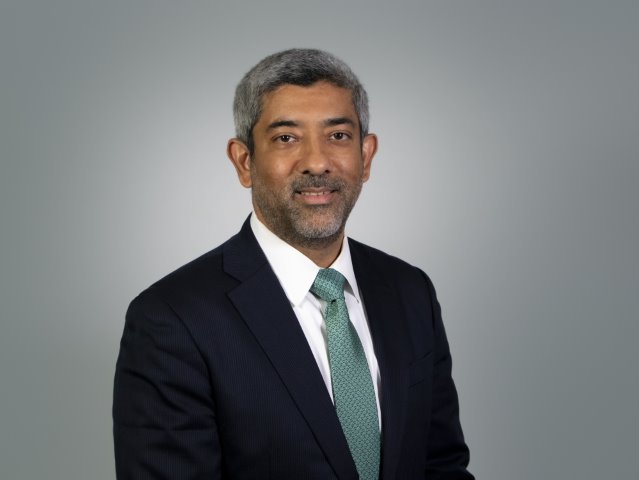The narrative behind former Japanese prime minister Shinzo Abe’s ‘three arrows of reform’ usually included making the country’s stock market more attractive to foreign investors, especially in regards to its corporate stewardship code. However, speaking to Zuhair Khan (pictured), manager of UBP’s U-Access Long/Short Japan Corporate Governance Fund, these assumptions may be wide of the mark.
Mr Khan spoke exclusively to Fundeye and gave a rather different context as to why Japan had to amend its corporate governance practices which for years had been plagued by customs such as ‘keiretsu’. This ownership structure was essentially insider capitalism that incentivised bad economic decision making.
He spoke of the fear held by Japanese politicians over the strides that China was making in terms of economic sophistication. Yes, Taiwan and South Korea may also have been nibbling at Japan’s lunch, it’s superiority in tech areas such as robotics and machinery but they poised no threat compared to what then was still considered by some a sleeping giant.

“It's nothing to do with foreign investors and being more attractive to them, that has absolutely zero to do with this. This is actually driven by the rise of corporate China more than anything else. The Japanese were like, ‘oh my god the Chinese, they're going to eat our companies alive’,” said Mr Khan.
Mr Khan is a rare breed among fund managers. Prior to joining UBP to run this unique fund, he’d been on the sell side at Jefferies researching Japanese equities since 2015. Plain speaking as seems to be his style, his reason being, “I decided not to be on the buy side in Japan because I found Japanese companies very frustrating.”. That said, he has in fact spent the majority of his career on the buy side.
But how do you decide which companies are really going to reform their corporate governance and which are simply paying it lip service? Again, his years of researching Japanese companies as well as Japanese culture (he started his career at a major Japanese bank) gives him an insight that outsiders perhaps would struggle to replicate.
His first place to start was with board structures and specifically how much of the board owned a meaningful amount of shares in the company. He contrasts these types to ‘salarymen’, who as long as they’re making enough to pay for their golf club memberships and so on, won’t want to put in any more effort that could benefit the company but equally may risk their jobs.
Interestingly, it’s not just tech start-ups or other young companies where board members have a fair amount of share ownership and Mr Kahn found that the more the board owned, the better the company would perform. He even quantified it, saying if you took the top 100 companies in terms of share ownership by the board members, and you took the bottom 100 companies by the same metrics, and you went long the former 100 and short the latter, you would generate about 8 percent a year.
He estimated that 20 percent of the top 500 companies on the Japanese exchange, the Nikkei, were early adopters of governance reform, predating the actual stewardship code in 2015.
“My initial reaction was that this is just wallpapering. It doesn't change anything underneath it just makes things look a little prettier.”
The fund
The hedge fund was seeded with around $60 million about 10 months ago. This has now grown to around $92 million so is on the cusp of where hedge funds need to be to attract the real money. A year’s back history and $100 million in AUM is when the institutions come to take a look and given this is a fund unlike any hedge fund most have seen, it may suit institutions looking for an ESG label.
As Mr Khan says, it’s really all about the ‘G’ in ESG as without it, how can anyone be sure that the other parts are being fulfilled?
This fund may also be suitable as a liquid alternative, i.e. repackaged under a UCITS brand by a firm such as Schroders who have its GAIA range. Some of the funds in that range are negatively impacted by UCITS rules, such as John Paulson’s Merger Arbitrage Fund. This is because UCITS limit the concentration that strategies such as merger arb require to be successful.
This fund though does not appear overly concentrated (for UCITS). Currently it has 30 long positions and 60 short positions. It’s sector neutral and Mr Khan said that when he looks at a sector in Japan, for every long position he finds, he’ll find two short positions. His reasoning being, “there are a lot of bad companies in Japan”.
“Our fundamental belief is that winning is based on governance,” Mr Khan concludes emphatically.





